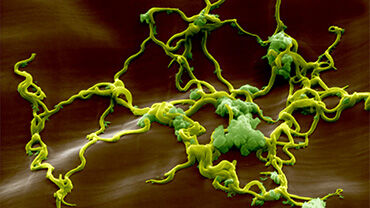Differences in Questing Tick Species Distribution between Atlantic and Continental Climate Regions in SpainArchived
Climate and vegetation in Spain vary from north to south, affecting tick distribution and consequently the presence of tick-borne diseases. The aim of this study was to investigate throughout a 2-yr study the distribution of the different exophilic questing tick species present in 18 areas: eight located in central and 10 in northern Spain.
Barandika JF 1, Olmeda SA 2, Casado-Nistal MA 2, Hurtado A 1, Juste RA 1, Valcárcel F 3, Anda P 4, García-Pérez AL 1,51 NEIKER-Instituto Vasco de Investigación y Desarrollo Agrario, Berreaga 1, 48160 Derio, Bizkaia, Spain.2 Departamento de Sanidad Animal, Facultad de Veterinaria, Universidad Complutense, 28040 Madrid, Spain.3 Centro de Investigación en Sanidad Animal-Instituto Nacional de Investigació y Tecnología Agraria y Alimentaria, Valdeolmos, 28130 Madrid, Spain.4 Instituto de Salud Carlos III, Centro Nacional de Microbiología, Majadahonda, 28220 Madrid, Spain.5 Corresponding author: NEIKER-Instituto Vasco de Investigación y Desarrollo Agrario, Berreaga 1 48160 Derio (Bizkaia), Spain (e-mail: agarcia@neiker.net).Journal of Medical Entomology 48(1):13-19. 2011 doi: 10.1603/ME10079
Climate and vegetation in Spain vary from north to south, affecting tick distribution and consequently the presence of tick-borne diseases. The aim of this study was to investigate throughout a 2-yr study the distribution of the different exophilic questing tick species present in 18 areas: eight located in central and 10 in northern Spain. The same methodology was used in both areas, sampling vegetation on a monthly basis by blanket dragging for 20- to 30-min intervals. A total of 12 species belonging to the genera Ixodes, Haemaphysalis, Rhipicephalus, Dermacentor, and Hyalomma was identified. Differences in species distribution and prevalence were dramatically different. The most frequent and abundant species in northern Spain were Ixodes ricinus (67% of adult ticks) and Haemaphysalis punctata (8%), whereas Hyalomma lusitanicum (86%) and Dermacentor marginatus (12%) were the most abundant in central Spain. There were important differences in the monthly seasonal patterns for the different tick species. These results highlight important differences in tick distribution in neighboring areas and underline the need for ongoing surveillance programs to monitor tick population dynamics and the prevalence of tick-borne pathogens.
VBORNET comment: 2011-05-17
Barandika et al. examine tick species diversity and abundance in two distinct climatic regions of Spain along a two year-monitoring. They highlight that Ixodes ricinus and Hyalomma punctata are more frequent and abundant in the north oceanic part with mild temperatures and humid conditions while H. lusitanicum and Dermacentor marginatus are predominant in central Spain with drier continental conditions. This is a clear update of tick presence in Spain and should be extended to other regions to implement tick and tick-borne disease surveillance systems.





